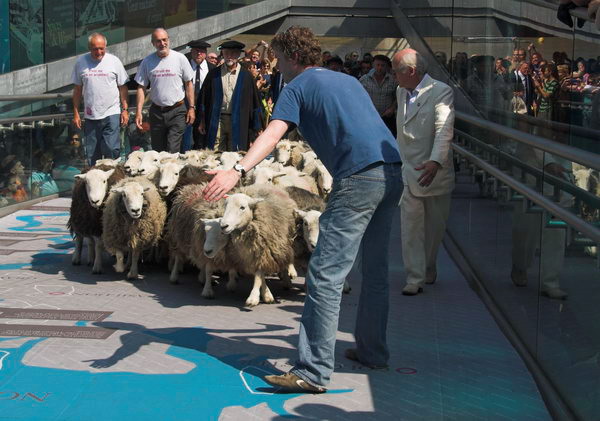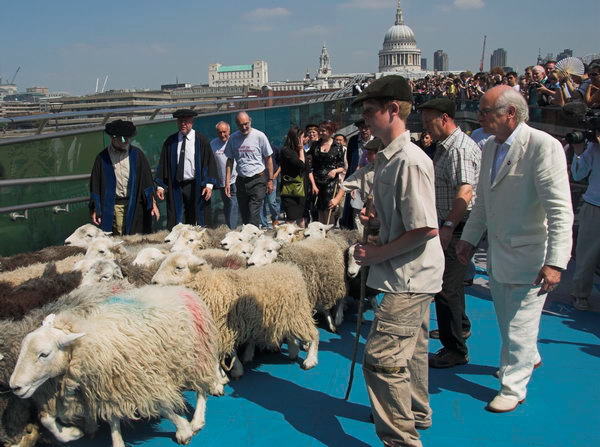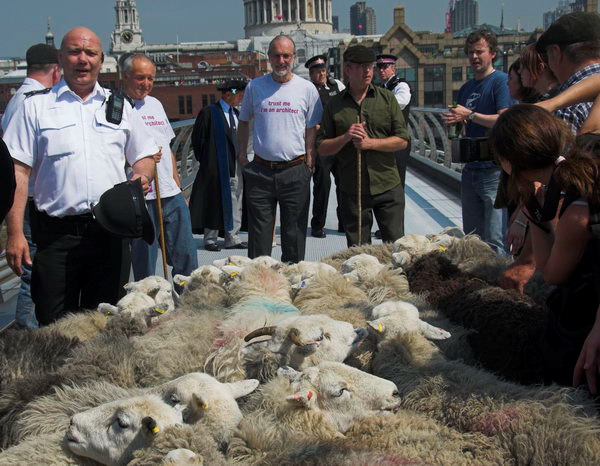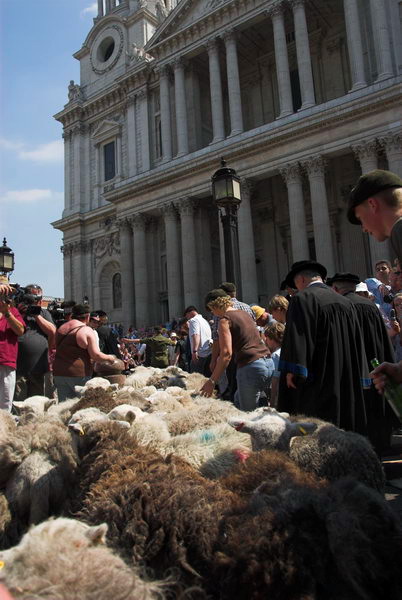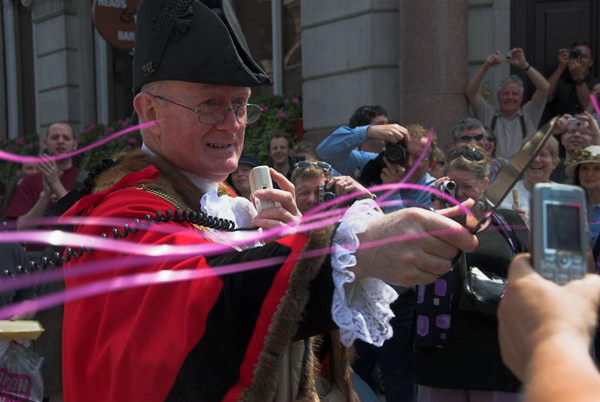Pensions, Cuts, Murdoch & Cafe Jiro: Thursday 23rd June 2011 – Trade unionists march against public sector pension cuts, a protest against Murdoch being allowed to take over BSkyB and one of my favourite artists turns a St John’s Wood gallery into his café.
20,000 March for Pensions & Against Cuts
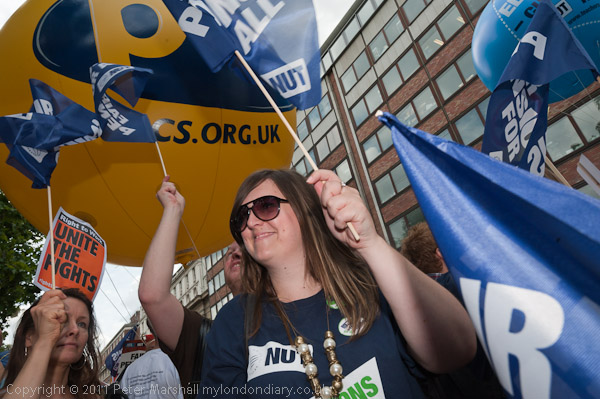
Public Service unions had organised a march against pension cuts and itt was joined by many thousands of union members as well as many others protesting against cuts in public services made by the Tory coalition government.
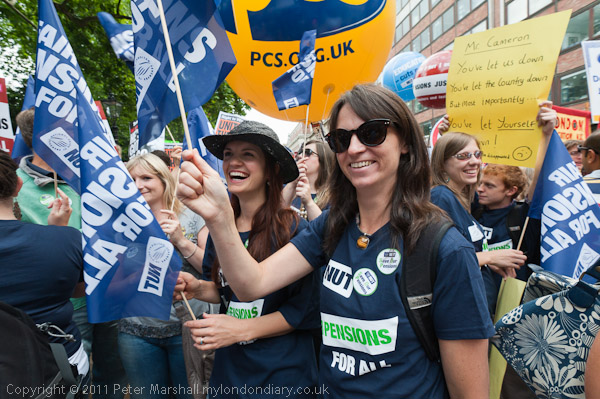
There was a large crowd waiting when I arrived in Lincoln’s Inn Fields over an hour before the march was due to begin and more were arriving as it left a little early as the organisers and police worried about overcrowding in London’s largest square – around 28,000 square metres.
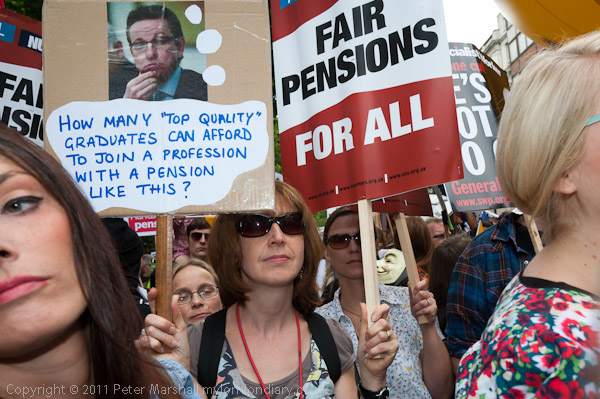

Before we left there had been speeches by several union leaders and the march was led to Parliament by Christine Blower NUT, Mark Serwotka PCS and Mary Bousted ATL along with MP John McDonnell.

The Hutton review had clearly shown that the government was lying when it said that public service pensions were not affordable. This report had said it expected “benefit payments to fall gradually to around 1.4 per cent of GDP in 2059-60, after peaking at 1.9 per cent of gross domestic product (GDP) in 2010-11.”

There seemed to be a huge number of police on the street for a peaceful march, particularly one that was mainly composed of teachers and civil servants with only a token presence from militant students and anarchists.
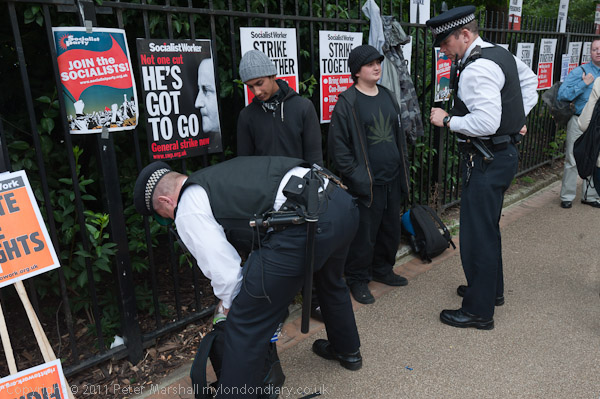
Police had earlier been busy in Lincoln’s Inn Fields where they appeared to be conducting stop and searches on any young male demonstrators in black clothing.
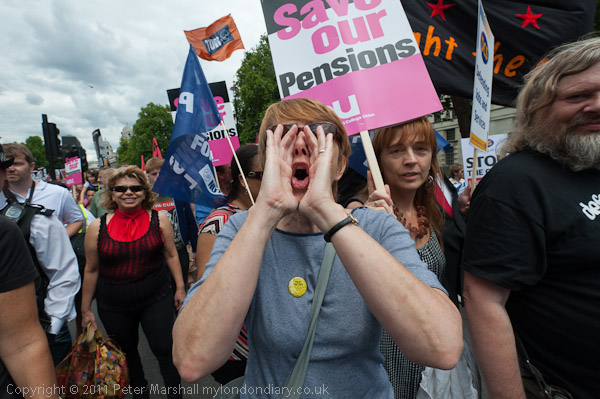
Things did get just a little agitated when for some reason police decided to stop the march on Strand for around 20 minutes and it got very noisy on Whitehall as it passed Downing St.
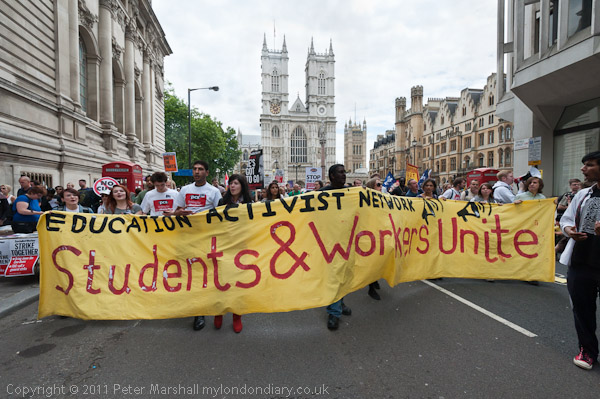
I stood outside Westminster Central Hall for around an hour as more and more marchers arrived from the main march I had been on and a number of others from various parts of London. Police and march stewards there objected to Charlie Veitch and other ‘Love Police’ haranguing the crowd in his usual deadpan fashion upholding his right to freedom of expression and they moved away.
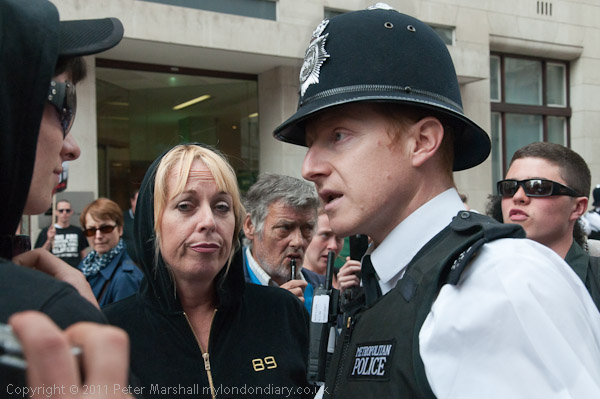
Westminster Central Hall is a large venue but far too small for the numbers at the event and there was a large overflow rally in Tothill Street at the side of the church. A group of 20 or 30 black-clad protesters there were told by police they must remove their hoods and dark glasses and there were some arguments. I heard later in the day there were a few scuffles with them and police in Whitehall and they were kettled for a few hours in Trafalgar Square.
More on My London Diary at 20,000 March for Pensions & Against Cuts.
Save UK Democracy From Murdoch – Dept Culture, Media & Sport
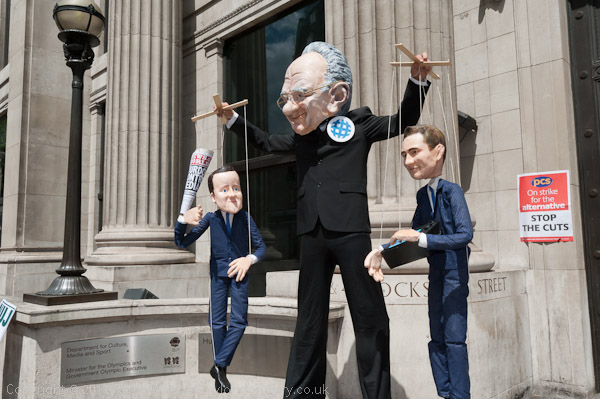
Outside the Department of Culture, Media and Sport was a protest organised by on-line global campaign network Avaaz and my union the NUJ against the decision by Jeremy Hunt to let Rupert Murdoch to take over BSkyB.
This was an emergency protest organised within minutes of the news breaking early that morning, and the email calling it went out when many were already on their way to work or to attend the pensions protest, so numbers were small.
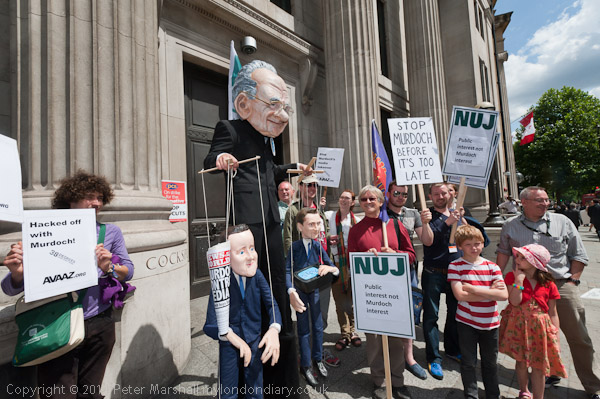
Obviously some planning had taken place earlier and there was a tall stilt walker with a large but rather inappropriately avuncular head of Rupert Murdoch, surely one of the ugliest figures in world media and pursuing a clear aim of world domination, toying with two large string puppets representing David Cameron and Jeremy Hunt.
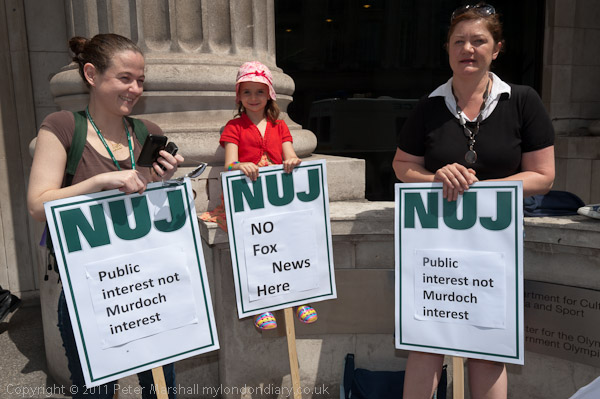
But most of the posters were clearly last minute, with laser-printed sheets being glued onto generic NUJ placards. NUJ members were “appalled – like most of the thinking population – by the thought of the UK’s largest commercial broadcaster falling into Murdoch’s hands, and the threat that this poses for in particular for news coverage, but also for a diverse and broadly based media culture. “
“They want the government to act in the public interest rather than as puppets for Murdoch’s interest and don’t want Sky News to become another Fox News.”
Save UK Democracy From Murdoch
Café Jiro 2011 – Queen’s Terrace Café, St John’s Wood
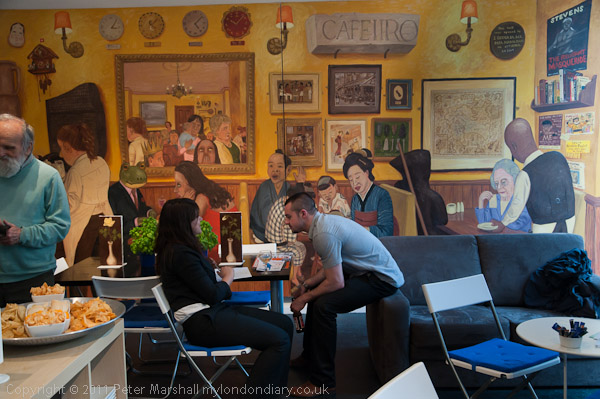
In the evening I was at The Queen’s Terrace Café, which had opened in April 2011. This was no ordinary café, but a cultural café, run by Mireille Galinou, who for some years had run a charity called the London Arts Café, which never quite managed to open a café but did organise a dozen or so exhibitions and numerous other art events in London.
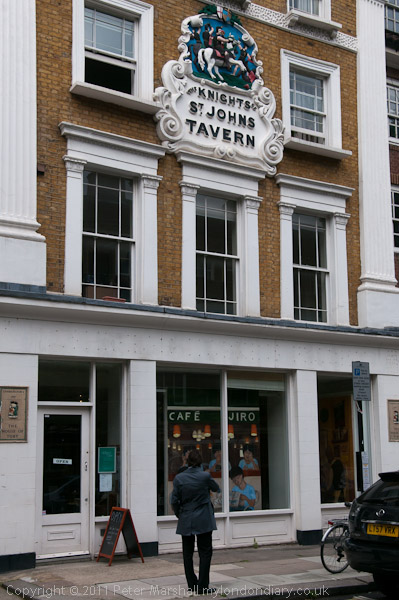
London Arts Café and The Queen’s Terrace Café are no longer with us, but you can still read online about many of the the activities the London Arts Café organised during its existence from 1996-2007. For some of this time I was Treasurer of the organisation and also wrote the web site.
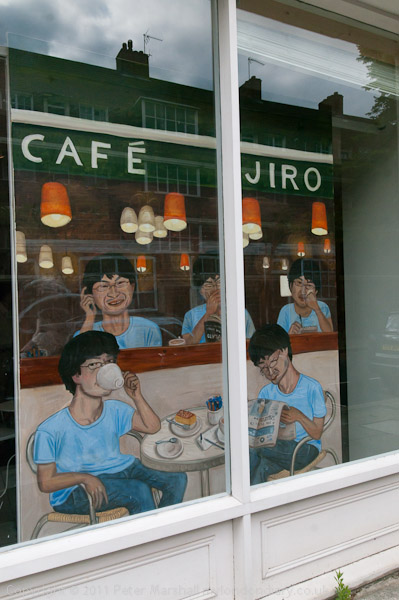
One of the most enjoyable art shows I went to in 2009 was Café Jiro, an installation in the Flowers Gallery in Cork St, London by a friend of mine, the Japanese artist Jiro Osuga who grow up in north London. The 2011 was a smaller and more intimate version of that show, with one of the large wall-size panels from the Flowers show, along with a number of other works specially produced for this space – including three in the smallest room.
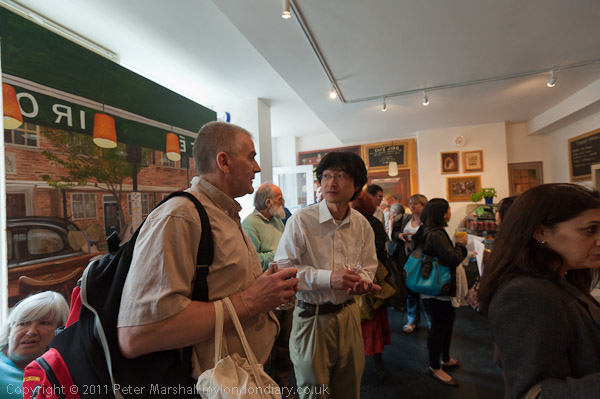
The small gallery was packed for the opening – and for me a great opportunity to meet some old friends, and it was good to see Jiro’s work in a real café environment. You can read more about the show on a 2011 post in >Re:PHOTO.
Flickr – Facebook – My London Diary – Hull Photos – Lea Valley – Paris
London’s Industrial Heritage – London Photos
All photographs on this page are copyright © Peter Marshall.
Contact me to buy prints or licence to reproduce.






